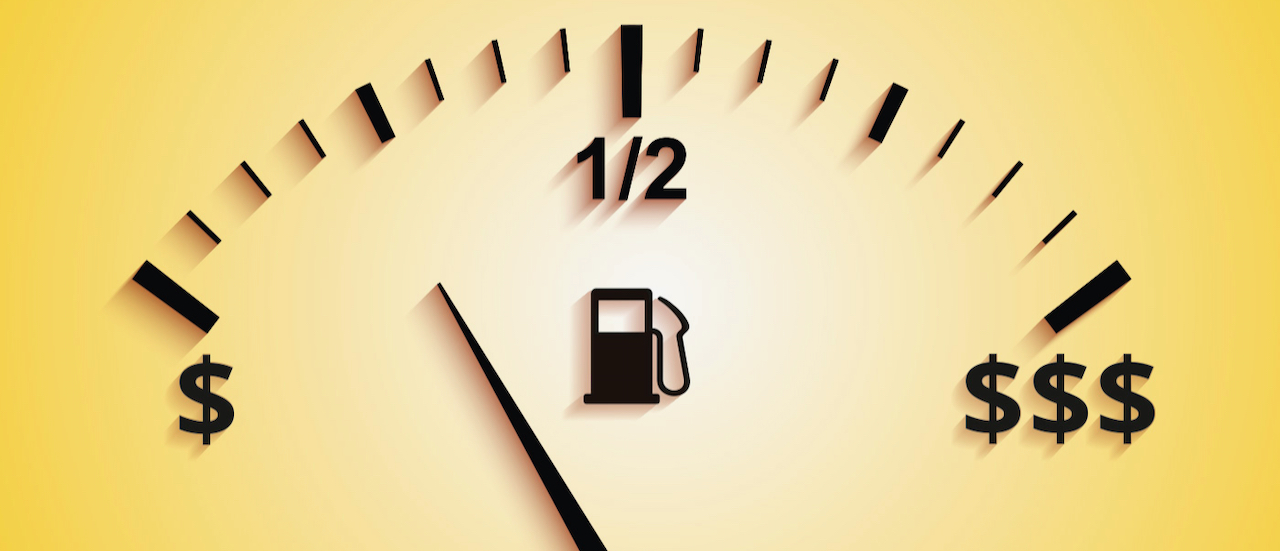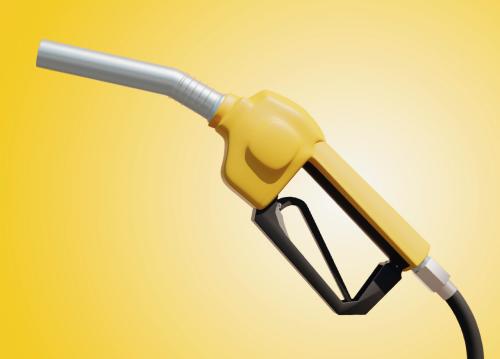
Pain at the pump: the implications of rising fuel costs
Feeling the sting of fuel prices? High costs are having an impact across all industries.
The cost of driving has reached record highs this year. In a nation where 80% of trips involve driving, that’s hit everyone – individuals, families and businesses – in the wallet. Not surprisingly, it’s having an impact on the country’s economy. If ‘pandemic’ was the word of the year for 2020 and 2021, then ‘cost of living crisis’ is set to take that title for 2022. Some may point out that that’s four words not one – but that’s the power of inflation!
New Zealanders are facing mortgage or rent increases and other household expenses, including groceries, have climbed, too. But fuel price increases have been the most severe and are the most publicly visible example of surging costs.

In mid-2021 motorists were paying $2.20 to $2.40 per litre for 91 octane. In the middle of this year the pump prices were up by a third. Diesel has been hit worse than petrol; from pump prices of $1.50 to $1.60 in mid-2021, they nearly doubled in 12 months.
The skyrocketing prices led to the Government taking the unprecedented step of reducing the tax on petrol, Road User Charges and public transport fares in March this year. This article went to print before the Government had decided whether to continue those discounts.
There are many reasons behind the cost increases in fuel. Global demand has surged after a slump during the pandemic, sanctions on Russia mean there is less oil available in the global market, our exchange rate is lower, shipping and other costs are up and the Emissions Trading Scheme levy on fuel and GST are adding more to pump prices than before.
Beyond all the big-picture economic analysis and fancy terms, the simple reality is that it is costing New Zealanders much more to drive from A to B.
The family
Amanda Langton is an Aucklander living with her husband and their three sons in the western suburb of Swanson. As a family they run three cars to manage their busy lifestyle.
“There’s no real way we can use one car because our time schedules are all different.” She estimates they are putting an extra $50 into each vehicle per week, meaning going to work and school is costing their household at least $150 per week more than it used to. “It is a bit of a kick in the guts. It is tough when you’ve got outings and you’re taking the kids to sport.”
The significant increase in fuel costs means they must be more careful with spending in other areas and Amanda feels for families who are not as able to handle the extra costs.
The tradie
Mark Brosnahan is the Managing Director of Brian Electrical, which has a fleet of about 30 vehicles providing electrical services on the Kāpiti Coast, north of Wellington. He has been in the business for more than 30 years and says that while costs for many of their supplies and materials are up, nothing has jumped as much as fuel.
Compared to 2020, the business’ fuel bill had increased $5,000 per month through the first half of the year. That’s an extra $60,000 per year in operating expenses in fuel alone. He says it’s “really hit the bottom line”. With no realistic options for changing their vans to electric at this point, the end result is the business has to charge more for the vehicle component of their fee – meaning their customers are paying more.
The farmer
David Clark’s family has been farming in New Zealand since the 1870s; he has 463 hectares in mid- Canterbury growing wheat, barley and other crops as well as sheep. He in no way wants to whinge about the current situation he and other farmers are facing, but he fears it may be as bad a time as the 80s and that was “bloody hard”. His combine harvester goes through 1,500 litres of diesel a day when it’s harvesting wheat and the cost of fuel to the farm has more than doubled from the previous season. Along with the fuel costs jumping, the cost of fertilisers, machinery, mechanical parts and repairs and the sprays they use have all leapt up as well. “Quite simply everything that we touch is going up in price. This year we’ll be losing money on growing wheat. “We are a solid, sound, low-debt business but even we are concerned about where things are going. For us to stay in business, one of two things need to happen. Either food prices go up or the input costs need to come down.”
The courier
Simon Kearsley is a courier owner-operator who normally clocks up 200-300km each day he’s driving across the Wellington region. He has been in the business for 15 years and changed from a traditional Toyota Corolla station wagon to a hybrid in 2018. Somewhat ironically, he is paying more in fuel costs than he used to, even though the hybrid uses much less fuel to travel the same distance.
With courier drivers operating on small margins and fuel being their biggest expense, the high pump prices are having an impact. However, for him, this has been balanced by an increase in work due to more medical deliveries and jobs related to people working from home, as well as Covid-related absenteeism among couriers providing extra work for others.
He feels that couriers with diesel vans have been hit much harder, as diesel prices have increased more than petrol, and they have Road User Charges to pay as well. “It’s not all doom and gloom, but the guys with the vans are struggling. A lot of people will be hoping that the prices are not going to be like this for too much longer.”
The truckie
Ross Whitfield has been in trucking since the 1990s and runs a business with 12 trucks operating out of Hawke’s Bay. He wouldn’t call this the toughest time he has seen in the industry – as there is still plenty of work available – but says the financial squeeze is severe, between rising costs and what customers are willing and able to pay.
The massive jump in diesel wasn’t the only factor, either. “Everything has gone up. The hourly rate for the workshop, the cost of parts, tyre prices have gone up. It’s made an already tough environment tougher and only some of that is getting passed on to the end customer.”
In Ross’s view, the current price spikes have simply amplified the fact that the trucking industry has been charging unsustainably low rates for some time and that is going to have to change. If businesses want to survive, they are going to have to increase prices, he says.
The economist
ANZ chief economist Sharon Zollner says that the focus for the Reserve Bank and most economists is on getting inflation under control in New Zealand’s overall economy, but that high fuel prices have a big impact on the public’s perceptions about inflation and the cost of living.
ANZ’s data indicates people are buying less fuel in terms of volume (meaning less driving is taking place) but spending more on fuel than they used to and Zollner says the high cost of fuel has been a part of consumer confidence being very low.
“It’s a very visible price – literally in lights – and it’s not a discretionary item. (And) the more people spend on petrol the less they have to spend on other things.” The glimmer of hope she would offer is that if the country gets inflation under control and prices stop rising, then there will be some significant increases in wages, particularly for lower earners.
This won’t be an immediate fix but hopefully it will balance out some of the cost increases over time.
What can be done?
The move away from fossil fuel-powered vehicles is underway; in future, cars will be powered by electricity or other fuels. But the world is still right at the start of that shift. Out of the 4.7 million vehicles in New Zealand, only about 4% are hybrids or electric.
“Right now, about 96% of the vehicles on our roads run on petrol or diesel and the majority of our fleet will continue to do so for many years yet,” says AA Motoring Affairs General Manager Simon Douglas. “That means the price of fuel is going to continue having a massive impact on New Zealanders’ personal finances and the country overall for the foreseeable future, as well as the impact of higher costs for vehicles, parts, repairs and even the costs for road maintenance and new transport projects.
“It affects all aspects of society, as some of the businesses in this story have shared. And just think of how emergency services have been impacted. Ambulances and Police in particular have large fleets, constantly on the road. When their fuel and fleet bills skyrocket, that is a major additional burden that can’t be avoided but can’t be passed on to ‘customers,’ either. The extra money has to be found somewhere, from within budgets that are often already extremely stretched.”
At the individual level, people can look to minimise their fuel costs by cutting back some trips, driving in a fuel-efficient manner, looking out for the best pump prices, using public transport or walking and cycling, if they can. But for many New Zealanders driving is still the only practical option for the trips they need to make.
“There are indications that there has been a reduction in driving overall but it’s not clear yet by how much, and there are limits to how much people can trim their costs,” says Simon.
“People who still need to drive a lot to go to work, to take the kids to school or sport, to go shopping or to visit family and friends, and the businesses facing rising costs, are hanging out for a significant drop in prices and we can all hope that happens. Unfortunately, the experts expect fuel prices to remain volatile and high for some time to come,” he says. “If the last two years have taught us anything it's that predictions can change quickly, but the tough times from high transport costs may not be going away any time soon.”
Reported by Dylan Thomsen for our Spring 2022 issue
